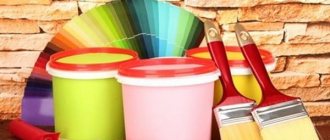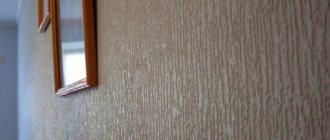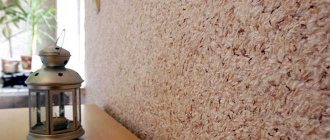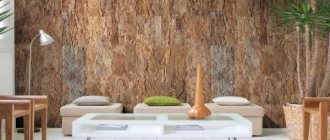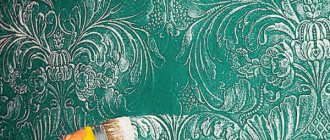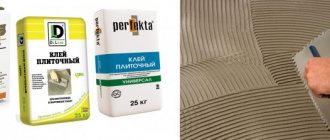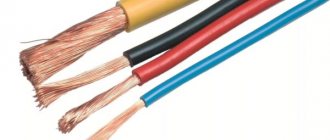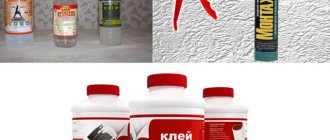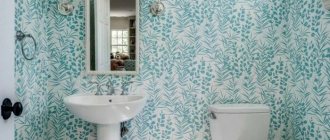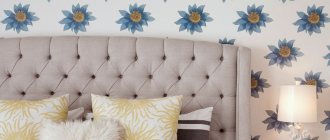The downside is that they are large and it is impossible to apply glue to the corners.
Which roller to choose for wall adhesive
The range of species is amazing, which means that the correct selection should be correlated with the preferences, available means of the client, and depend on the current situation. For example, a wallpaper roller is designed for applying glue, as well as rolling out pasted pieces of wallpaper on the wall.
Builders recommend buying a “joining” roller. It rolls hard-to-reach places, removes bulges, makes them invisible, reducing their visibility. Copes with slits in wallpaper.
Due to the fact that people are little aware of all the intricacies of construction activities, they do not know which roller is best to apply wallpaper paste. For this work, you can use even the simplest homemade tools.
Focus on price. Choose cheap ones because they are no different from expensive ones. To save money, foam rubber ones are suitable. It is also recommended to purchase a bath, due to which the consumption of the solution is minimal, since the excess gets into the container by rolling.
Which roller to choose for wallpaper
The most suitable one is foam rubber with large air slots. It is important to consider that the wall must be level. Before work, it will have to be lubricated with glue. The optimal width of the working part of the foam roller is from 20 to 30 centimeters.
The main advantages of the tool when working with wallpaper:
- It is enough to pass over the bath several times for the solution to be absorbed;
uniform lubrication of the entire surface;
Finally
If you have a roller, gluing is highly likely to be successful. But keep in mind that you shouldn’t take the first one you come across. It is better to spend some time choosing the right tool.
We recommend watching the video below with professional advice.
Source vseprokley.ru
Features and types of rubber pressure rollers for wallpaper
The wallpaper roller has a simple design: the yoke is the bent part;
lever; cylinder. The tool is convenient for applying different solutions, allows you to speed up the surface treatment process and creates an even distribution of the selected composition without streaks. A rubber roller, silicone or other material can be additionally equipped with a long handle to process the ceiling surface from the floor.
There are different width options, so choose the appropriate option for different areas. Unlike brushes, a wallpaper glue roller creates an even layer, leaving no layers of material of different thicknesses. At the same time, there are different shaped options that are suitable for different purposes.
The tool is convenient for applying different solutions, allows you to speed up the surface treatment process and creates an even distribution.
What is a back bolster used for?
The correct position of the skeletal bones is formed: the spine, ribs and pelvis. back pain disappears
, chest rises.
The muscular system comes into tone. back
muscles are stretched, spasms and tightness in different sections of the spine and shoulder girdle are relieved.
Interesting materials:
Where is the highest humidity in Russia? Where is the highest humidity? Where is the best black soil in Russia? Where is the best black soil in Ukraine? Where to sow mustard? Where are Haier washing machines assembled? Where are potash fertilizers found? Where is potassium chloride found? Where is vitamin E found in foods? Where are scans saved on iPhone?
Wallpapering tools
When the walls are marked and the wallpaper is cut into even strips, you can proceed to gluing. At this stage, prepare the following tools:
- Paint roller
– needed for applying glue to the wallpaper. It should have medium-length bristles. - Wallpaper roller
– smooth, for smoothing thin wallpaper on the wall. It will help remove bubbles without damaging the canvas. A yellow wallpaper roller is for textured wallpaper, black for smooth wallpaper. Wallpaper roller for corners - has a cone shape, so it can easily help you level the wallpaper at the joints and in the corners. - Sponge
- to avoid damaging the wallpaper, choose the softest one with a smooth surface. With its help, it is easy to remove excess glue from the wallpaper on the wall. You can also remove glue, stains and stains with a damp soft cloth. - Brush
- buy two: a wide one for applying a layer of glue to a wall or canvas, and a narrow one so that it is convenient to coat joints and corners.
- Wallpaper brush
– replaces a roller and brush. It can be used to apply glue to wallpaper, but its main purpose is to level the wallpaper on the wall. It is especially convenient when gluing wallpaper on the ceiling. - Wallpaper spatula
- plastic or rubber, so as not to tear the wallpaper. Designed for leveling sheets glued to the wall. - Painting spatula
– metal. Useful if you need to cut off wallpaper near the ceiling. Place the spatula firmly at the junction of the wall and ceiling and mark an even cutting line. - Painting bath
- to evenly distribute the glue on the roller. Choose a size that is slightly larger than the size of the roller. Roll the roller over the ribbed surface so that the glue lies evenly.
List of all possible tools
When you make a list of the necessary materials and tools, take into account the fact that during the preparatory stage you may need not only tools associated with applying glue, etc., but also improvised means for tearing wallpaper off the walls (or removing old paint), and for filling various holes with putty.
First, let's list all the tools for gluing wallpaper:
- paint roller,
- wallpaper roller,
- wallpaper roller for corners,
- painting bath,
- bucket,
- sponge,
- drill,
- insulating tape,
- pencil,
- brush,
- ruler,
- stationery knife,
- scissors,
- screwdriver,
- plumb line,
- construction tape,
- construction mixer,
- rag,
- square,
- level,
- cord,
- painting spatula,
- wallpaper spatula,
- wallpaper brush,
Please note that this list of tools is not mandatory. So, you can apply glue to the wallpaper using one roller (not several). You can cut the canvas either only with scissors, or only with a stationery knife.
Paint roller
Wallpaper rollers come in different varieties. Let's look at painting first. When choosing a paint roller at a hardware store, ask the sales assistant to bring you a roller with medium-length bristles. This tool is used to apply diluted glue to the surface of the cut fabric or directly to the walls, depending on the type of wallpaper chosen.
Paint roller
Wallpaper roller
The purpose of this roller is not to apply an adhesive solution to the surface to be glued or rolls, but to smooth out the cut canvas that is already glued to the wall. Thus, thin wallpaper is not intended for use with a spatula, as it can damage it. This tool will come to the rescue and help you get rid of bubbles and excess glue between the wall and the canvas. Wallpaper roller comes in two colors – yellow and black. The first is used if your wallpaper has a raised pattern and you don’t want to “crush” it, and the second is used for a more even surface when there is no fear of ruining anything.
Wallpaper roller
Wallpaper roller for corners
Thanks to its conical shape, it will allow you to apply the necessary pressure on individual areas of the canvas - namely in the corners.
Wallpaper roller for joints
Painting bath
After you dilute the glue in a randomly selected container, you should choose a good tray that will allow you to distribute the glue evenly over the entire working area of the roller. The bath consists of two parts - there is a flat surface and there is a smooth surface. The roller needs to be rolled precisely on an uneven surface with ribs. The size of the paint bath directly depends on the size of the roller (its width should be slightly larger than the width of the roller).
Painting bath
Bucket
You will need a bucket to dilute the glue solution in. At the same time, if you expect to use glue the next day, then it is best to choose a bucket (or any other container) with a tightly closed lid. This is the only way to store glue! Of course, do not forget to place the container in a cool place, out of reach of sunlight. If you are interested in the question of how to glue wallpaper, then we suggest that you read another article on our website.
You can’t do without a bucket, you need it for stirring the glue
Sponge
It will be useful for wiping off excess glue along the edges of the canvas glued to the wall. Choose a sponge that is as soft as possible, and if its side has a more ribbed surface, then do not even think about wiping your wallpaper with it, as you can easily damage it.
A sponge is useful in the process of wallpapering
Drill
This tool can come in handy if you don't have a construction mixer. Select a nozzle so that you can stir the glue solution.
A drill is convenient for stirring glue
Insulating tape
It is quite natural to have at least one switch and one socket in any room. After you unscrew them and take out the boxes, you should be sure to insulate all the wires, otherwise you will expose yourself to danger. And electrical tape will help you with this.
Fabric tape
Pencil
You will need a pencil to mark the walls. Choose a pencil that will be visible on the concrete wall. Thus, construction stores offer everyone who wants to buy a construction pencil.
Buy a good pencil before wallpapering
Brush
Here we will not consider each brush option in detail. They differ in width, elasticity of the fibers (soft or harder) and their length. If you do not use rollers, which, if you have already understood, can have different purposes (for canvases, for corners and for joints), then be sure to buy one wide and one narrow brush. A wide brush will help apply a layer of glue to the canvas or the surface of the wall, and with a narrow brush you can coat the walls at the joints and corners between the wall - ceiling and wall - floor.
Wallpaper brush
Ruler
If you don’t have a construction tape at home (like any other), you’ll have to use what you have. A ruler will help you measure the height of your walls and determine the length of the wallpaper. Do not forget that you need to add about 5 cm to the resulting wall height for adjusting the canvases to each other.
The most common ruler
Stationery knife
You will need a utility knife to cut the canvas to the specified length. It is very convenient if you want to trim corners. A knife is also used to trim the fabric along the baseboard or ceiling. In addition, during the process of wallpapering walls, bubbles may appear under the canvas, which cannot be removed with a roller or spatula. In this case, you can try to make a small cut in the wallpaper. True, it is best to use a thin needle for these purposes. It is better to make 3-5 small holes with a needle and spend a little more time than one large and conspicuous “hole”.
Stationery knife
By the way, if the knife blade becomes dull, do not rush to buy a new one. Drive the blade inside the knife so that one part remains outside (until the last notch). Take a pair of pliers and break off a piece. So, you can use a new sharp blade on the edge of the knife. In addition, you can protect yourself from unnecessary injuries by hiding your eyes under construction glasses.
Scissors
They will be suitable for you to cut the canvas to the desired size. But, unlike the same stationery knife, it seems to us that cutting off the corners, and even more sharply a thin line under the ceiling, will be much more difficult and inconvenient with scissors.
Scissors are an important tool in wallpapering.
Screwdriver
A screwdriver is useful for removing boxes from sockets and switches. Do not forget to insulate the wires after this, as described above.
There is a screwdriver in every home, and it comes in handy
Plumb
A very necessary tool, because how smoothly you glue the canvas to the wall depends on its availability and proper use. Attach the top to the top so that the weight “dangles” at the bottom. Now draw a straight line along the hanging thread with a pencil or felt-tip pen. A plumb line allows you to apply even vertical markings.
The plumb line is also useful for wallpapering.
Construction tape
I think there is nothing to explain here - a tape measure will help you measure the height of the walls, their width, and also cut out the wallpaper correctly.
Construction tape
Construction mixer
The mixer is designed for stirring the adhesive solution. If you don't have a construction mixer, don't despair! In any case, even if you use a clean wooden stick, this process will not affect the properties of your glue for the worse. You just have to devote a little more time and effort to the stage of bringing the glue to the desired concentration, plus you will have to add the dry mixture in smaller portions than using a mixer. But if you are the happy owner of this tool, then pick up a construction mixer, turn on low speed and gradually pour out Place glue in small portions into a bucket of cool water (hot water is not recommended).
Construction mixer
Rag
Using a rag soaked in water (be careful: it should be wet, but not to the point that water drips from it), wipe the surface of the glued canvas, getting rid of excess stains and stains. It is best that it is soft - it will not damage the wallpaper.
The most common rag
Square
The tool will be useful to you if you need to cut out various geometric shapes from a roll of wallpaper. Use a square to draw a right angle.
Square
Level
A level is required in order to stick the canvas in a straight, vertical position. A level and plumb line are important tools for wallpaper work!
Level
Cord
You can make a plumb line out of it by attaching a small weight. On the other hand, the cord can be used to mark walls horizontally.
Even a simple lace can help you
Painting spatula
To cut wallpaper near the ceiling or floor, place a spatula there and draw a straight line with a utility knife.
Painting spatula
Wallpaper spatula
The working surface of such a spatula is not metal, but plastic or rubber. The fact is that it is necessary to smooth the canvas on the wall, which will allow you to expel excess glue and bubbles. Plastic and rubber will not damage your wallpaper. But remember that if your wallpaper is very thin, a wallpaper roller will be the best choice for this stage of pasting.
Wallpaper spatula
Wallpaper brush
If you don’t have a roller or brush, you can use a brush to apply glue to the canvas or wall surface. But its main purpose is the same smoothing of the canvas glued to the wall. The brush is especially convenient when used when gluing not walls, but the ceiling.
Wallpaper brush
Do I need to prime?
Some people ask the question “should I prime non-woven wallpaper to create a better base for painting?” This question is difficult to answer, since there are different opinions on this matter. It is necessary to prime the surface before gluing wallpaper, but opinions differ further.
If you prime the surface of the wallpaper, you will get a better base on which the paint will lay evenly and without streaks. At the same time, it will not form stains when drying due to the fact that the paint has penetrated to different depths of the wallpaper base. As you can see, it is possible and even necessary to prime this type of finish if you want to get an ideal wall or ceiling surface along its entire length. But there are people who argue that there is no need to prime non-woven wallpaper, since it is already quite dense and will not absorb enough mixture to create stains.
It is worth noting that this type of wallpaper can be painted up to six times. And between paintings, in order to get an excellent new coat, it is still recommended to prime. But it all depends on your desire, since a primer cannot always help to avoid uneven painting, as this can be caused by poor-quality paint or finishing, as well as non-compliance with painting technology.
If you follow the recommendations given in the article, you will paint non-woven wallpaper without any problems.
Choosing a roller for applying glue to the wall
Here you need to take into account that the wall is strong and reliable. It is quite difficult to damage it. Some people prefer to use painting tools. But, there is an alternative option - wallpaper rollers made of foam rubber. Why them? Advantages of this use:
- They are well soaked with adhesive, and excess glue is also drained well. You need to move it around the bath several times.
- If you roll the tool over the tray, controlling the amount of glue absorbed, then when applying the glue to the wall, not a single drop will fall, the process will be clean and neat.
- The mixture is applied evenly over the entire wall.
- Since foam rubber absorbs well, accidentally applied excess can be easily removed by repeated rolling.
- After finishing the work, the wallpaper roller is easy to wash and remove all the glue. The tool will be suitable for future use.
The optimal width for applying paste to the wall is 20 cm.
Helpful Tips:
- Gluing wallpaper from a stool or table is quite inconvenient and dangerous, so experts recommend purchasing a stepladder. If you decide to make such a purchase, then you should choose a ladder made of aluminum, because it is quite durable and light.
Important! To avoid accidents, we recommend turning off the power to the room where wallpapering will be done. If this is not possible, then sockets and switches can be sealed with electrical tape.
- It will take about a day for freshly pasted wallpaper to dry completely.
- When gluing and drying the wall covering, drafts must be avoided.
- Try to prevent direct sunlight from falling on the wallpaper, because they do not like temperature changes and may simply fall off.
Which roller to choose for wall adhesive
The range of species is amazing, which means that the correct selection should be correlated with the preferences, available means of the client, and depend on the current situation. For example, a wallpaper roller is designed for applying glue, as well as rolling out pasted pieces of wallpaper on the wall.
Builders recommend buying a “joining” roller. It rolls hard-to-reach places, removes bulges, makes them invisible, reducing their visibility. Copes with slits in wallpaper.
Due to the fact that people are little aware of all the intricacies of construction activities, they do not know which roller is best to apply wallpaper paste. For this work, you can use even the simplest homemade tools.
Focus on price. Choose cheap ones because they are no different from expensive ones. To save money, foam rubber ones are suitable. It is also recommended to purchase a bath, due to which the consumption of the solution is minimal, since the excess gets into the container by rolling.
The best way to apply glue
Benefits of wallpaper brush:
- Makes it possible to apply glue to hard-to-reach places.
- Due to the size of the working part, it covers a lot of surface.
- Suitable for sealing joints.
Flaws:
- A lot of time is wasted.
- High price.
- Only one use is possible as it rinses out slowly.
- Frequent brush hair loss. For this reason, you have to clean the wall, the back side of the coverings.
Pros of the roller:
- Quickly apply adhesive solution to wallpaper or wall.
- The range of products offered allows you to work with embossed, smooth, thin and other wallpapers.
- Reusable.
The downside is that they are large and it is impossible to apply glue to the corners.
Types of rollers
Rollers are made from both natural and artificial materials. If we talk about which roller is better, then it all depends on the work being done and the composition of the paints.
Polyamide products work well with paint containing solvents, as well as water-dispersed compositions, absorb and apply it well.
They are easy to maintain, easy to clean, resistant to aggressive components in the paint, and wear-resistant. They give excellent results on any surface, including very uneven and bumpy ones.
Polyacrylic tools are used to work with water-based compounds and paints and varnishes. They are optimal for painting semi-rough surfaces, but will work well on rougher or smoother ones.
The products have a long service life, wear resistance characteristics are almost similar to polyamide rollers, and the quality of the resulting coating is only slightly inferior to them.
A foam roller is used when painting with a water-based adhesive composition. This material is completely unsuitable for working with enamel, varnish or oil paints - their compositions can corrode foam rubber.
A polyester roller works well with dispersion paints; its fiber structure is uniform, but it wears out very quickly.
How to choose a textured roller for decorative plaster
Decorating walls with decorative plaster is a popular and original way of interior decoration. It is characterized by the presence of a structural pattern on the surface that plays with color shades. You can create it using a special roller.
What is the roller for?
One way to apply paint to a surface is to use a roller. Everyone is familiar with this tool. Along with painting products, textured and structural rollers are produced, with the help of which a simple pattern is formed. The depth of the relief and the structure of the finish depend on both the composition of the solution and the type of coat.
Purpose of rollers
The painting tool has a short-pile coat. Fur or foam tips are most often used. Such a cylinder evenly distributes paintwork over the surface. All that remains is to ensure that there are no smudges or unpainted areas.
The application technique is simple, but success largely depends on the consistency of the paint, the correct amount of paint and the squeezing of the coat. An indispensable assistant in this matter is a bathtub with a recess and a relief podium.
Textured rollers are equipped with a fur coat made of foam rubber, rubber and other materials. There are also plastic and even wooden rollers. There are reliefs on the surface of the cylinder. When passing through the plaster, they leave grooves in the form of simple patterns. The texture imitates a vine, waves, a cut of stone, etc. You can work with this tool with different solutions:
- starting or finishing putty;
- paint;
- plaster.

